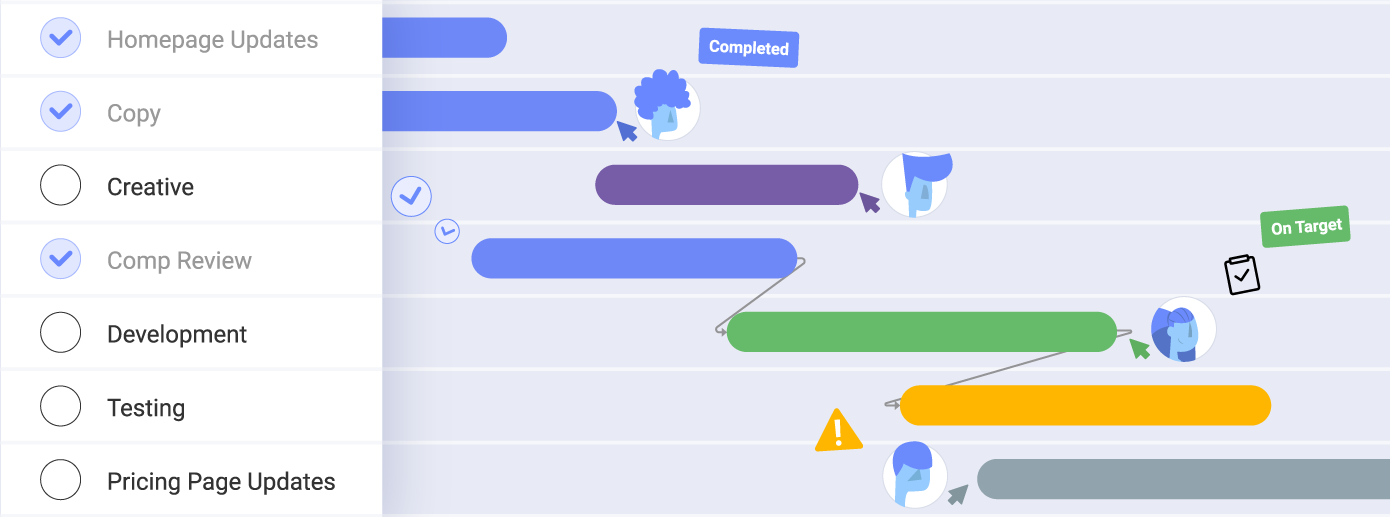
How to Write a Startup Business Plan
This article will delve into the most important aspects to include when writing your startup business plan and what to avoid. We will also provide you with some additional tips on how to craft a winning startup growth business plan.
Executive Summary:
This article will delve into the most important aspects to include when writing your startup business plan and what to avoid. We will also provide you with some additional tips on how to craft a winning startup growth business plan.
So, you have an idea that you want to become a thriving startup.
The first step to success is writing a comprehensive business plan. A well-crafted startup business plan can help you secure funding, understand your target market, and prioritize high ROI strategies.
But where do you begin?
This article will delve into the most important aspects to include when writing your startup business plan and what to avoid. We will also provide you with some additional tips on how to craft a winning startup growth business plan.
Let’s get into it:
How to Write a Startup Business Plan in 10 Steps?
- Outline an executive summary
- Describe your company
- Perform market analysis to find your product-market fit
- Describe your products or services
- Perform customer segmentation
- Analyze the competition
- Develop a marketing plan
- Develop startup partnerships and resources
- Outline the management of your company
- Make a financial plan
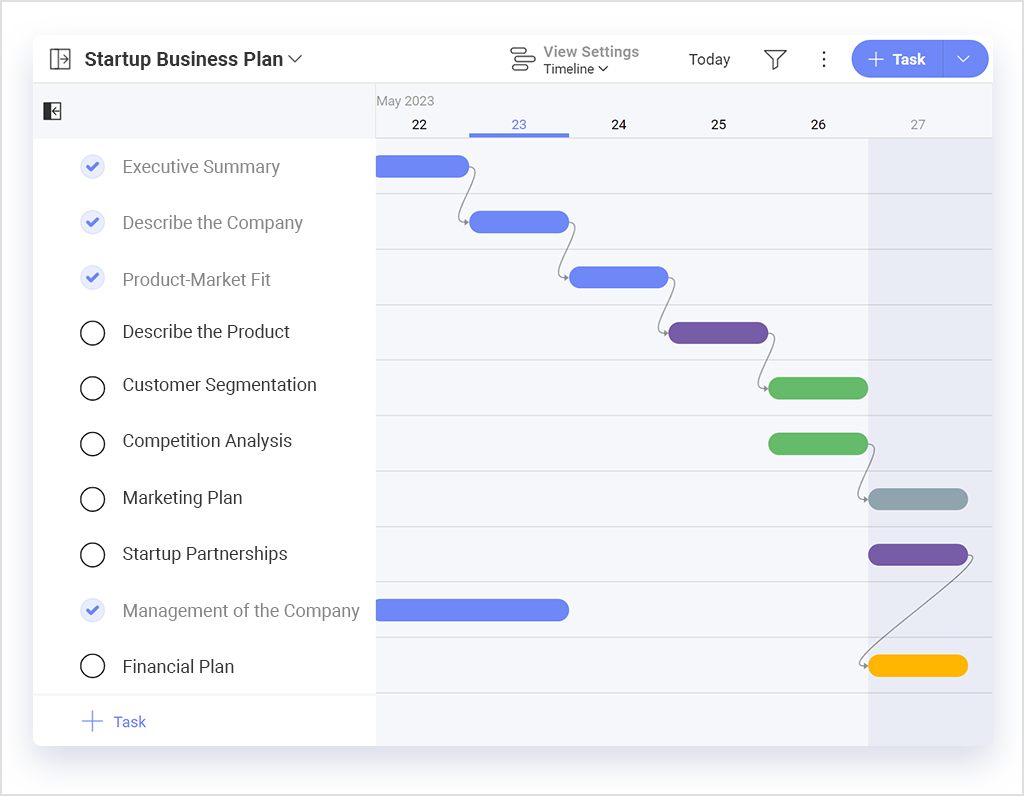
1. Outline an executive summary
When outlining your executive summary, starting with your value proposition is critical. This should be a simple, precise, one-sentence overview of your business concept that addresses the target customer point and how you propose solving it. In addition, you can lay out some key goals to help support your value proposition.
If you are only writing your startup business plan for planning purposes, you might be able to skip this step. However, we recommend you do this anyway to ensure your value prop is always aligned, consistent, and top of mind.
2. Describe your company
Next, you should provide a detailed description of your startup. This description should answer two fundamental questions:
- Who are you?
- What do you do?
The answers should include information on why you are in the business, what makes your business idea stand out, and why you are a good investment bet. Here are some additional components you should include in your company description:
- Your business vision, mission, and value proposition
- Any relevant history or milestones achieved
- Your business structure
- Your business model
- Your short and long-term business objectives
- Introduction to your team’s key members
While answering some of those will be straightforward, others will require extra thought. Clarifying your company’s critical components is an excellent opportunity to identify your principles and cultural values and answer the questions of why your business exists and what you’re striving to achieve in the long run.
3. Perform market analysis to find your product-market fit
According to Failory, 34% of startups fail because of a lack of product-market fit. Unfortunately, it is too familiar for startups to rush to market without knowing whether anyone is looking for what they are selling. Choosing the right market is fundamental to a startup’s business success. Conduct thorough research on your target market, industry trends, customer needs, and competitors to find yours.
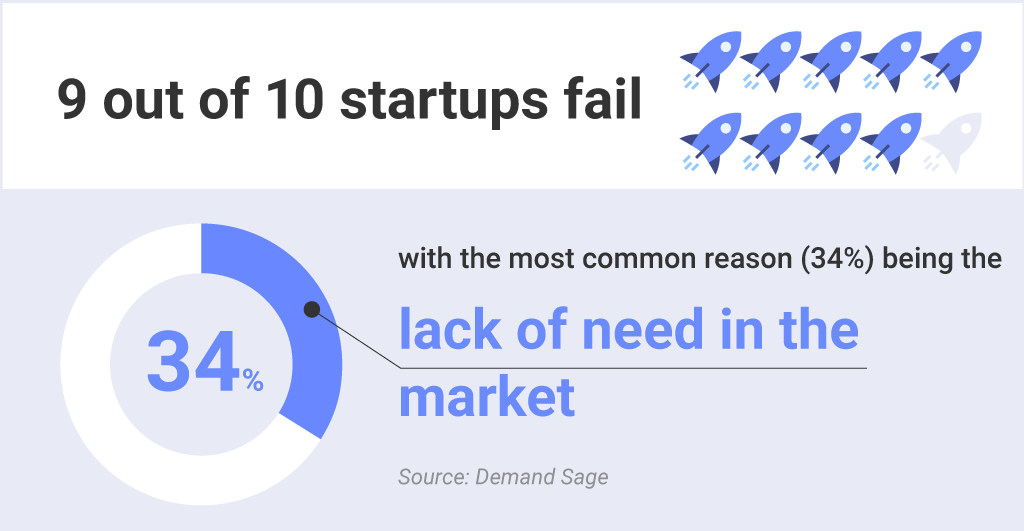
There are various products and services that serve a particular need and requirement. Ensure you find a clear market niche – an ideal buyer persona with a need or pain point your product or service can help solve.
You must find your startup’s product-market fit before you risk investing in developing a product or service that brings no value to the market and, therefore, will be overlooked. Finding your startup’s product-market fit means moving more quickly to ROI and faster growth.
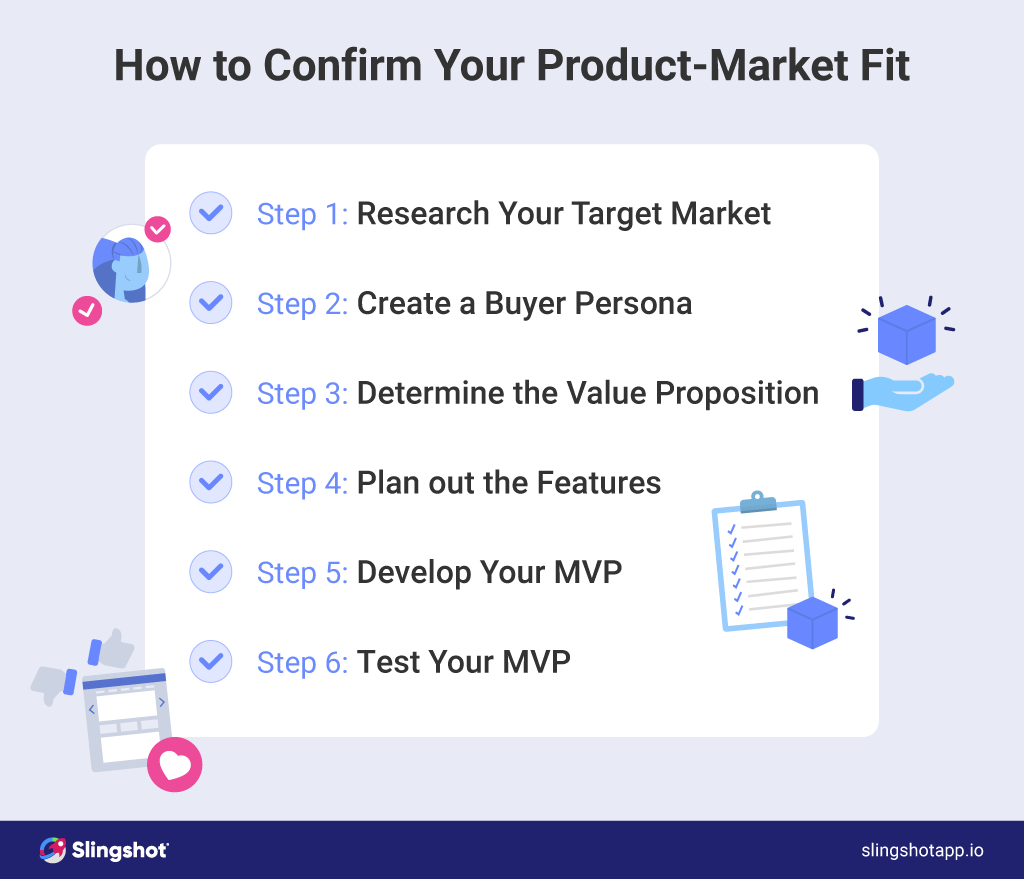
4. Describe your products or services
In this step, describe your product or service in detail. Depending on your business, if you sell many products (for example, an E-commerce store), you can include more general information on each. However, if you have a tech/SaaS company, you would need a detailed explanation for all your products or services. Highlight features, benefits, and competitive advantages. Explain how they can help solve customer problems and answer their needs.
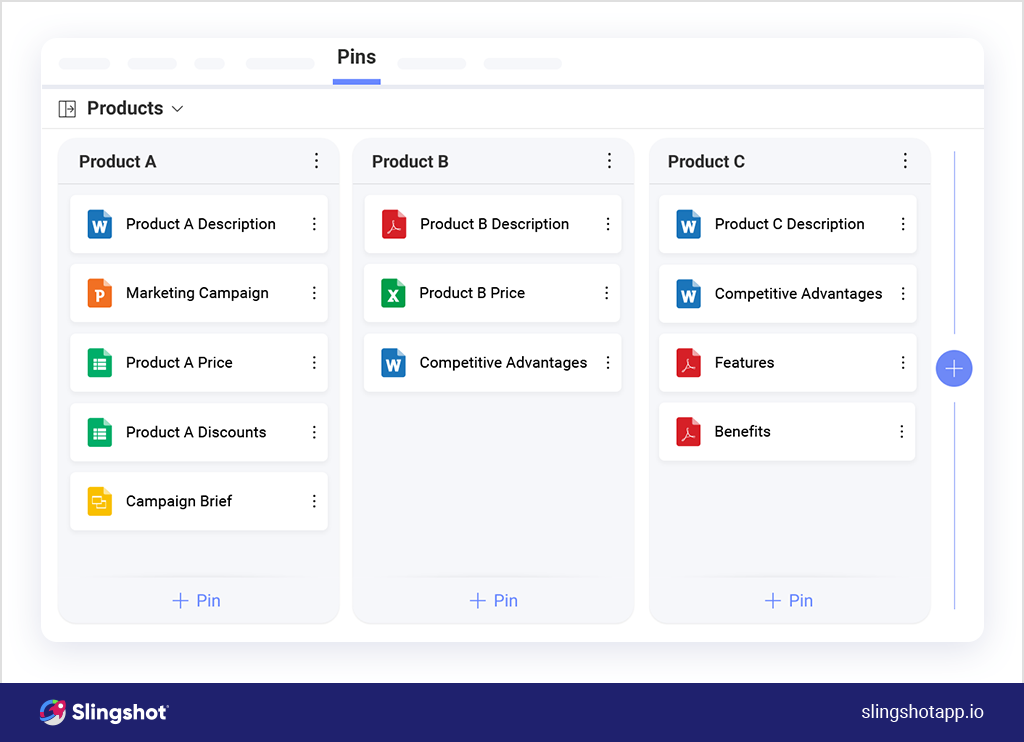
5. Perform customer segmentation
You will want to create your ideal customer persona after finding product-market fit. This ideal customer or buyer persona, aka target market, must be the foundation of your marketing and sales strategies; you will want to keep that person in mind when making strategic plans and decisions for your startup business.
To give a holistic overview of your ideal customer, describe those general and specific demographic characteristics:
- Where do they live
- What is their age range
- What is their level of education
- Where do they work
- How do they spend their free time
- How much they earn
- What are the key values, beliefs, and opinions
- What are their online shopping habits
Start broadly. But as you continue going through your market research, narrow your segmentation and get more specific.
By the time you’re finished, your customer segmentation should look something like this:
- man
- ages 35 to 45
- living in the Washington area
- working in the technology industry
- with an annual income of $100,000-$120,000
- interested in motorsports
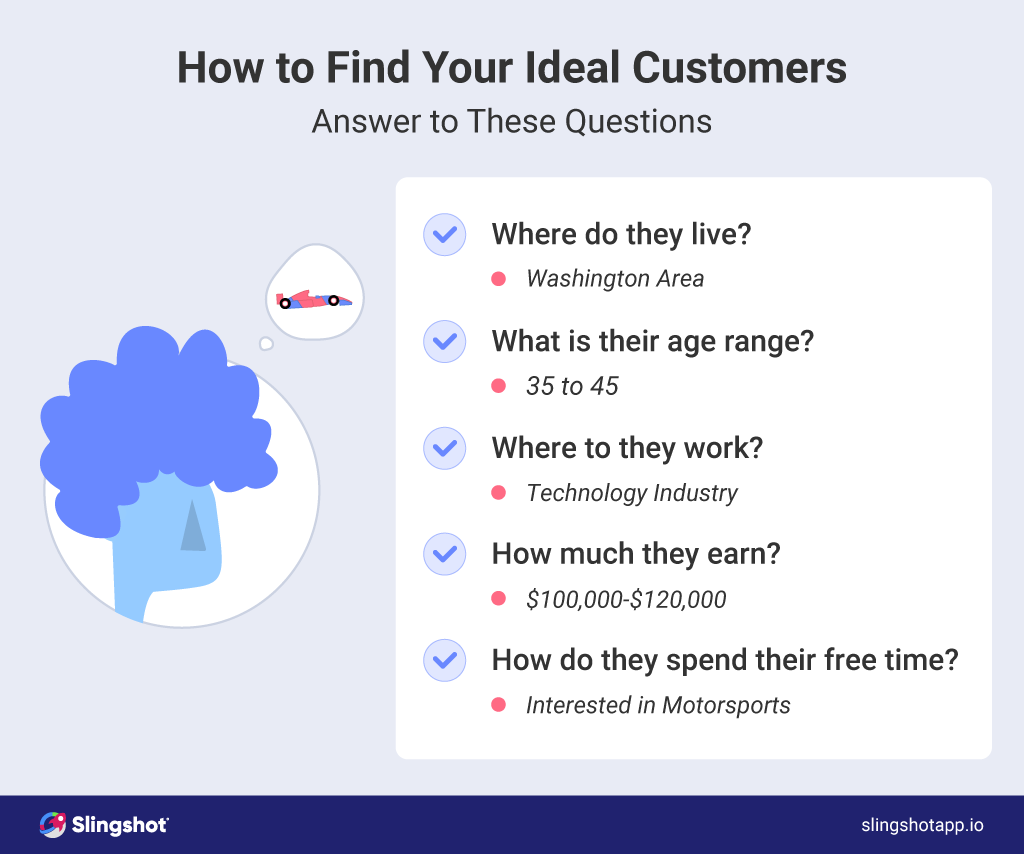
This information will vary based on your product/service and what you are selling. Still, nevertheless, it must be clear and specific so you know who you are trying to reach.
6. Analyze the competition
It’s no surprise that competition is a startup’s biggest growth challenge. When you’re starting, there will be more established, bigger competitors with access to more resources than your startup has.
You should learn as much about your competitors as possible and put yourself in a potential customer’s shoes to see how you stack up. It’s not just about competing – it’s about standing out, truly differentiating yourself in the marketplace. You are competing for audience and market share, which means you need to know what your competition offers, how they offer it, and how successful they are. Measuring your competition’s successes and failures can help identify gaps in your marketing, sales, and overall business strategies. Addressing those gaps gives you a competitive advantage.
Having as much information as possible will help you put your startup in a better position to succeed.
7. Develop a marketing plan
Marketing is about capturing potential customers’ attention, heart, and wallets. If you want your startup to grow, effective marketing is critical. Start by outlining what you intend your marketing approach to be. Include your target audience, distribution channels, promotional activities, current decisions, and future strategies.
Conduct keyword research and develop marketing KPIs and metrics to measure success and allocate budget appropriately. Remember to revisit and revise the plan regularly to ensure success.
For more information on creating a successful marketing strategy for your business, check out our B2B SaaS marketing guide and how to create and launch successful marketing campaigns blog.
8. Develop startup partnerships and resources
When developing a startup business plan, it’s essential to also develop partnerships and resources as a part of the plan. To develop these, you can explore ways to establish business resources, such as through publications, incubators and accelerators, seminars, industry associations and trade organizations, investor networks, and more.
You will also need to determine how much funding your startup requires and how you plan to use these funds. In this part of your startup business plan, you have to include financial projections, such as cash flow statements, expenses, and revenue forecasts.
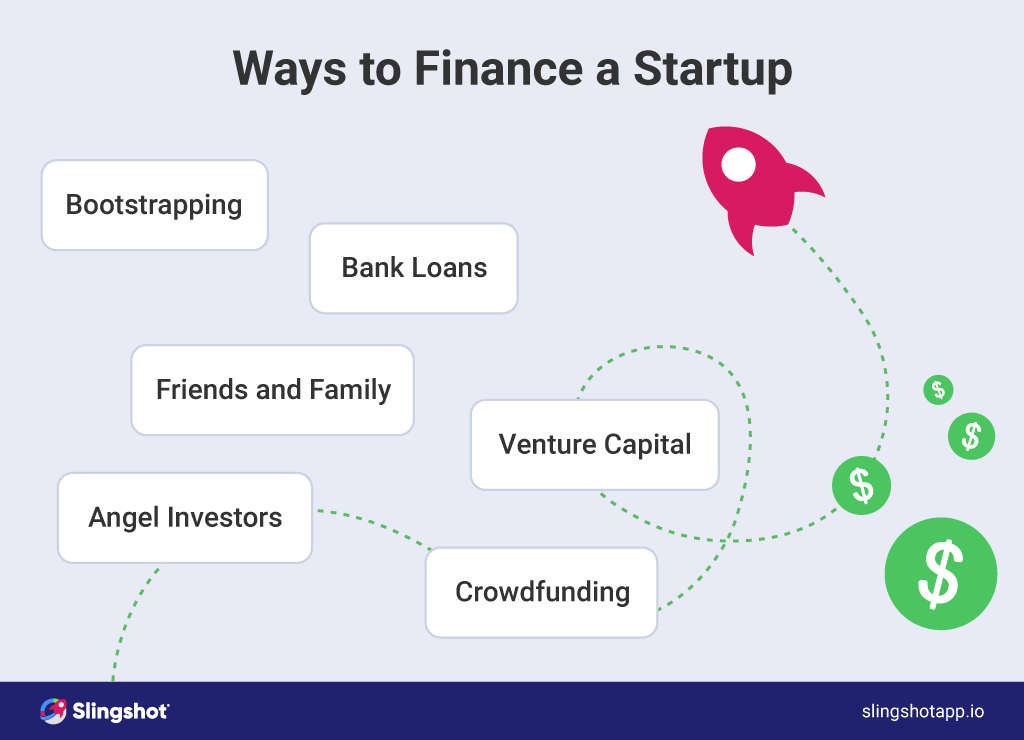
In the startup space, it’s crucial to have a solid business plan and financial projections to demonstrate your potential for success to potential investors or lenders. Learn how to finance a startup business in our blog on the importance of data in startup financing.
9. Outline the management of your company
As part of your startup business plan, it’s essential to outline the management structure of your company. This includes identifying key team members, their roles and responsibilities, as well as the organizational structure of your company.
Remember to tailor the management section to your specific startup. If you’ve already assembled a team, highlighting the key team members of it and their roles in the business showcases the strength of your management team and their ability to execute the business plan.
If you still need to get a team, first identify the key roles that your company requires. These roles may be CEO, COO, CFO, CMO, CTO, and other essential roles such as HR. Once you have identified these roles, you can define each position’s responsibilities. After you do that, consider what the organizational structure of your company will be. Will it be a flat structure, or will it have multiple levels of management? Will there be departments or teams? It’s essential to consider the most effective structure for your company’s goals and needs.
Finally, if you’ve yet to create a team for your startup business growth, consider how you will attract and retain top talent. This may include offering competitive salaries and benefits, providing opportunities for growth and development, and creating a positive and supportive work culture.
10. Make a financial plan
A well-crafted finance plan is essential to the success of any startup. As a startup working on its business plan, you’ll have no financial information you can provide. Start by forecasting profits for the first year, identifying expected cash flow, and a balance sheet (what you own and what you owe). Estimate sales and profits based on research, industry data, and marketing strategies.
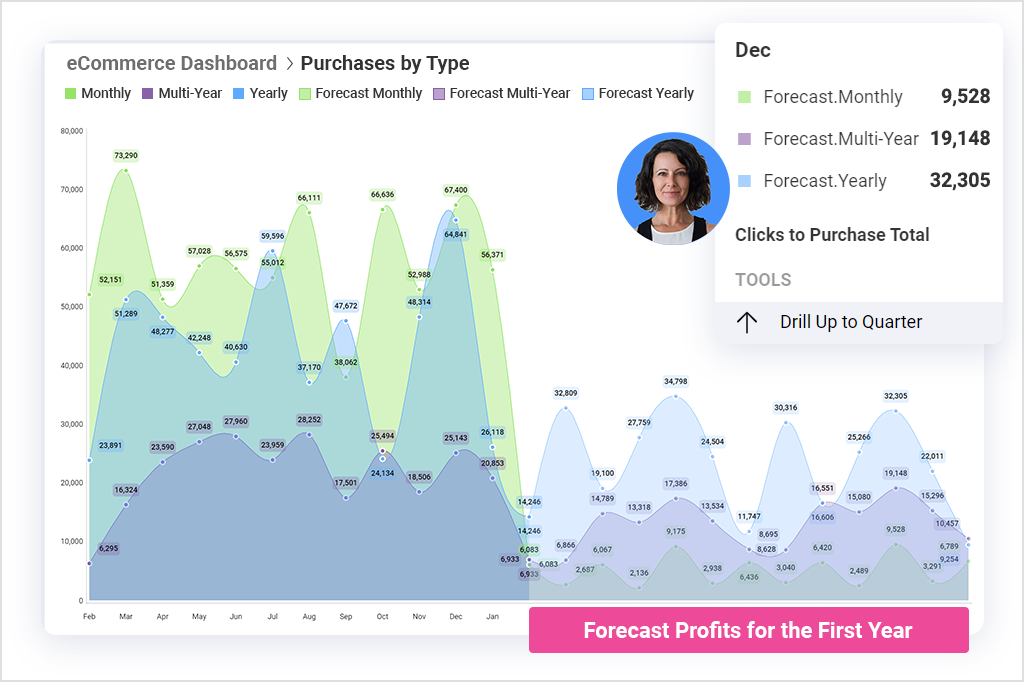
You should also include best-case and worst-case scenarios of your financial goals and plans to achieve them to be transparent and honest in front of potential investors who will read your startup business plan.
Remember to update your financial plan regularly as your startup progresses and market conditions change.
Mistakes to Avoid When Writing Your Startup Business Plan
- Overly optimistic or unrealistic financial projections can undermine the credibility of your plan
- Having no exit strategy
- Not using data to back up your claims
- Providing an overwhelming amount of information
- Only outlining vague goals and objectives
- Not knowing your distribution channels
- Underestimating the competition
- Leaving out important facts
Top Tips for Writing a Startup Business Plan
- Know your audience and tailor your language and level of detail to match the audience reading it
- Clearly define your startup’s vision and long-term goals
- Spend time to research, research, and then do some more research
- Use clear and concise language, bullet points, and visual elements to make it easier to read and understand
- Proofread for spelling, grammar, and punctuation mistakes
- Add reference adhortative data points for all the information regarding your competitors, customers, and the market
- Address potential risks and mitigation strategies
- Address legal and regulatory considerations
- Share your business plan with trusted advisors, mentors, or industry experts to gather feedback
- Regularly revisit and revise the plan to improve its effectiveness
- Use a business plan software to help you simplify and speed up the process
How Slingshot Can Help You with Your Startup Business Plan?
If you’re currently shopping for business plan software for your startup that is business user-friendly and at a low cost, check out Slingshot. While we may be biased (we are talking about our product), Slingshot provides an easy-to-use interface and a set of productivity tools. Slingshot gives you the speed, reliability, flexibility, connectivity, and security features to make your startup business plan a success story.
For writing a startup business plan, Slingshot can help with the following:
- User-friendly interface: Slingshot’s intuitive interface will help you begin writing your startup plan right away. Instead of wasting time trying to learn and navigate complex startup solutions with Slingshot, you get everything you need in a logical and structured manner. Slingshot has a drag-and-drop capability and includes guidance through tooltips, explanations, and prompts.
- Project/task management: By leveraging project and task management features, you can streamline the creation of a startup business plan. For example, when creating your business plan, multiple tasks and subtasks must be completed; some are even repetitive. Slingshot provides you with task templates and allows you to assign tasks to specific team members, set deadlines, and track the progress of each task or project in a List, KanBan, and Timeline view. You can stay organized and meet important deadlines by visualizing the project timeline and task dependencies.
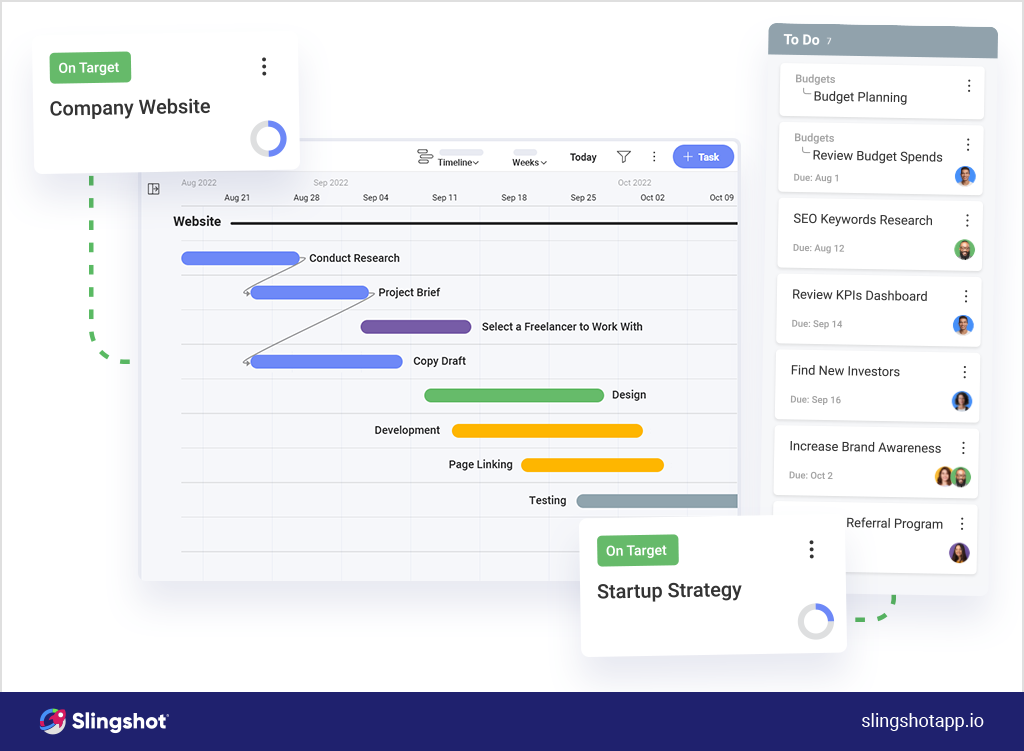
- Calendar view: Slingshot’s calendar view allows you to schedule these tasks, set deadlines, and allocate time blocks for working on different plan sections. By visualizing your schedule, you can manage your time effectively and ensure that you allocate sufficient time for each task. You can set reminders and notifications to stay informed about approaching deadlines.
- Real-time collaboration: With features like instant mentions, live commenting, 1:1 chats, project & workspace discussions, task collaboration, cloud-based file storage, powerful search, and notifications, Slingshot enhances communication and allows for efficient brainstorming and idea sharing. Slingshot’s collaboration features ensure everyone is on the same page, leading to a more cohesive and well-developed business plan.
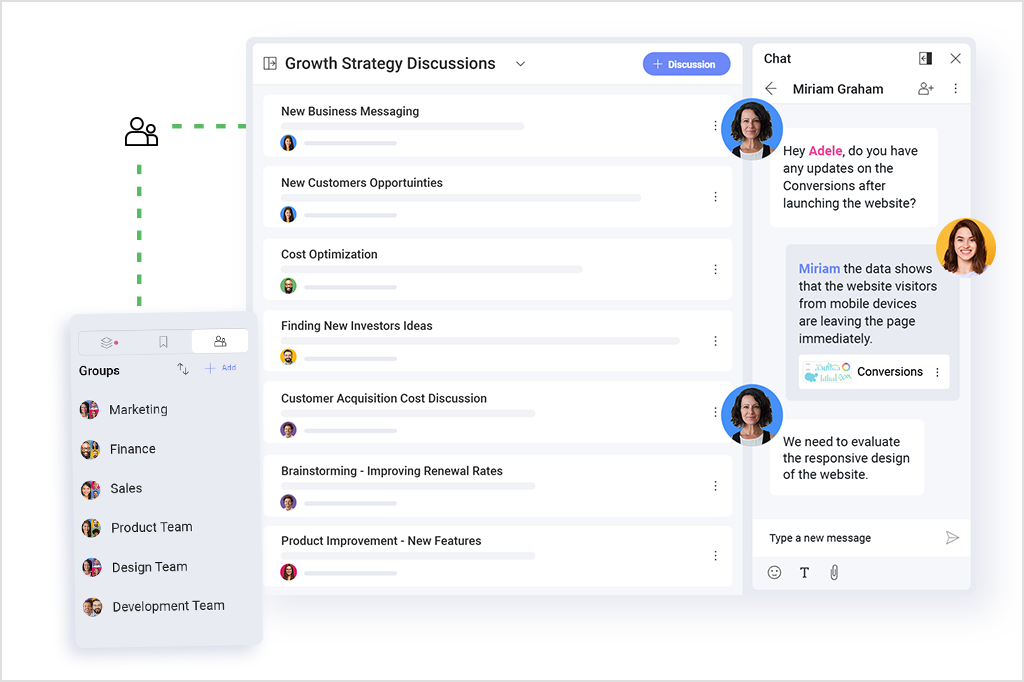
- Content management: Store all the documents related to your business plan in a centralized location, making it easier for all your team members to easily navigate and access relevant files, such as research materials, financial data, and supporting documents. With Slingshot, you can create lists (kind of like folders) and sections to categorize and group related documents. These content management features eliminate the need to search through various folders or email attachments, saving time and reducing the risk of losing essential documents.
- Data analytics: Data analytics features can play a crucial role in writing a startup business plan by providing valuable insights, supporting evidence-based decision-making, and strengthening the overall credibility of the plan. Slingshot is designed with robust data analytics capabilities for data analysis, data visualization, and reporting. Also, it provides advanced features like data catalog, machine learning, data blending, dashboard linking, global filtering, statistical functions, and annotation. The best? The best is that all of Slingshot’s analytics capabilities are self-service. Regardless of technical knowledge and experience, all your team members can easily analyze data to extract valuable insights to drive informed decision-making.
- Robust integrations: Slingshot integrates with big data storage like Google BigQuery and Amazon Athena and databases like Azure SQL, Oracle, Microsoft Azure SQL Database, and Snowflake. It also integrates with SharePoint, Spreadsheets, Rest APIs, social media platforms like LinkedIn, Facebook, and Twitter, and marketing and sales CRMs like Google Analytics, Marketo, HubSpot, Salesforce, and others. You can view the full list of Slingshot’s integrations here.
- Accessibility: Slingshot is available on the web, iOS, MacOS, Windows, and Android, so you can easily access, track, and collaborate on your startup business plan from everywhere.
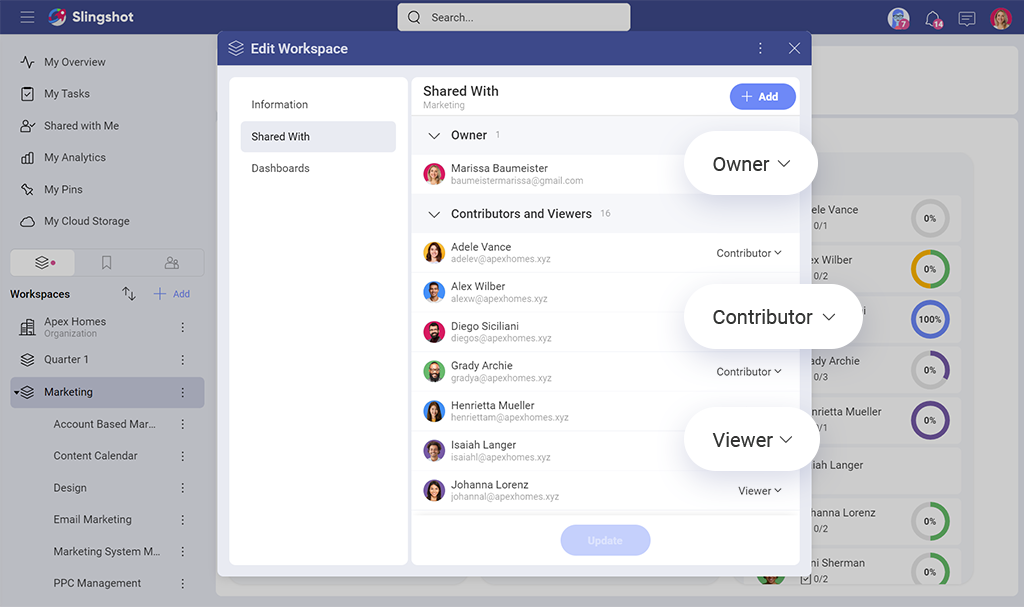
Startup Business Plan FAQ
What is a startup business plan?
A startup business plan is a document that outlines the goals and strategies of the new business venture. It includes business description, market analysis, financial projection, offering, marketing and sales strategies, and funding requirements. The startup business plan serves as a roadmap of how the startup intends to achieve its objectives and secure funding.
The startup business plan aims to help entrepreneurs and potential investors understand the viability of the business concept, the potential risks, the competitive landscape, and the business’s target market.
What is a lean startup business plan?
A lean startup business plan focuses on the most critical aspects of the business. It is designed to be quick and easy to create. The lean startup business plan is supported by a one-page document that does not require extensive financial forecasting and development plans accompanied by comprehensive details of each and every aspect of the company. Instead, a lean startup business plan uses customer needs and problems. It focuses on the business value proposition to differentiate the offering from competitors. It is a great way to get a high-level overview of your business. It can be used to communicate your vision to potential investors or stakeholders. A lean business plan is also often used to onboard new hires or modify existing plans for a specific target market.
What is the difference between traditional and lean startup business plans?
Overall, a traditional business plan is more comprehensive. In contrast, a lean startup business plan is a simple, straightforward, quick summary of your value proposition, resources, customer segmentation, and revenue streams.
Related Articles
Ready to grow your business 10x with AI decision-making?
Request a Free Demo of SlingshotSHARE THIS POST




 Return to Blog
Return to Blog

